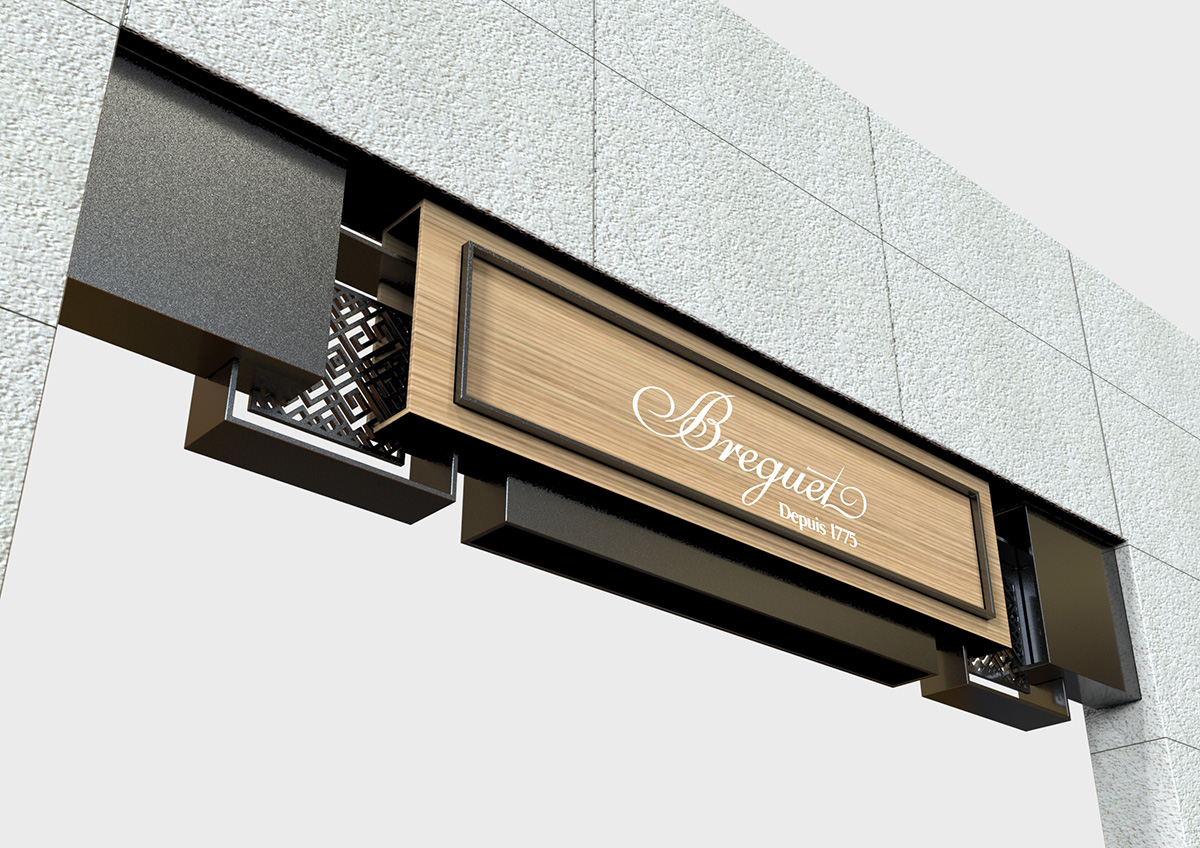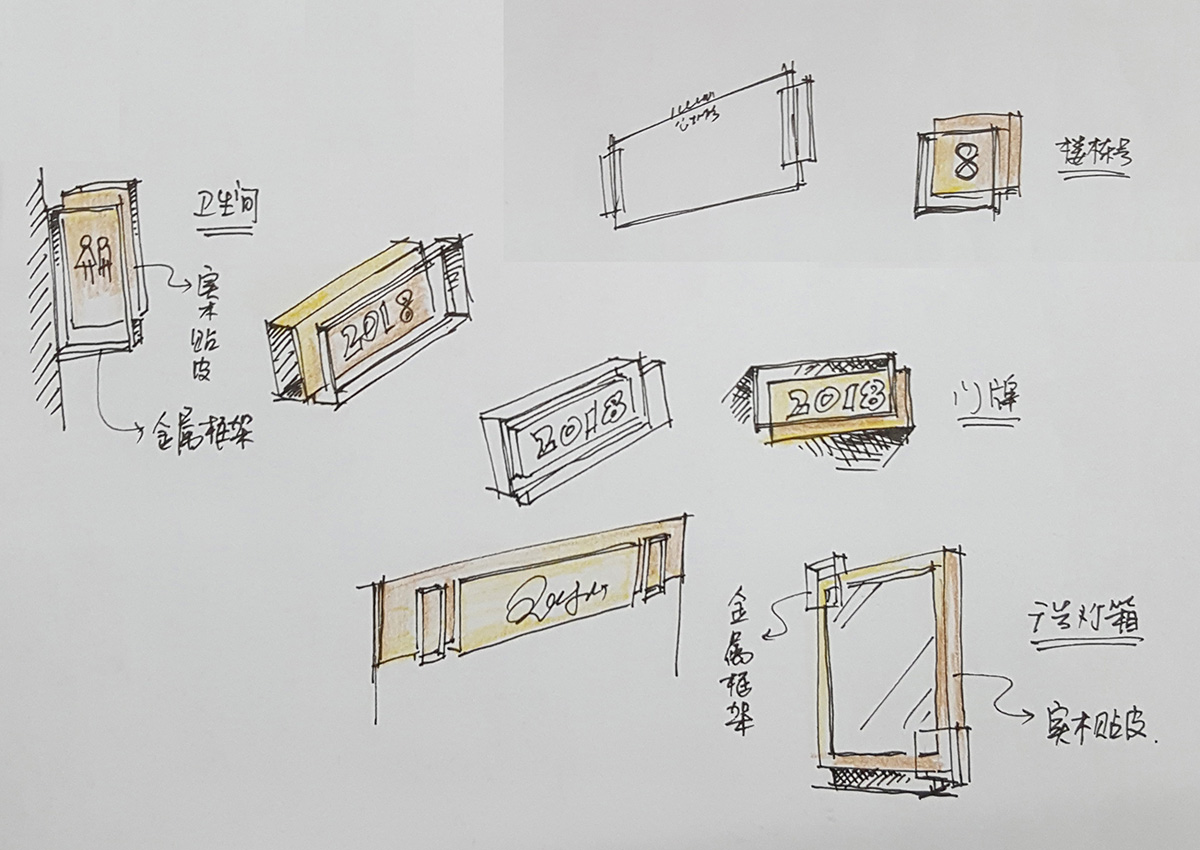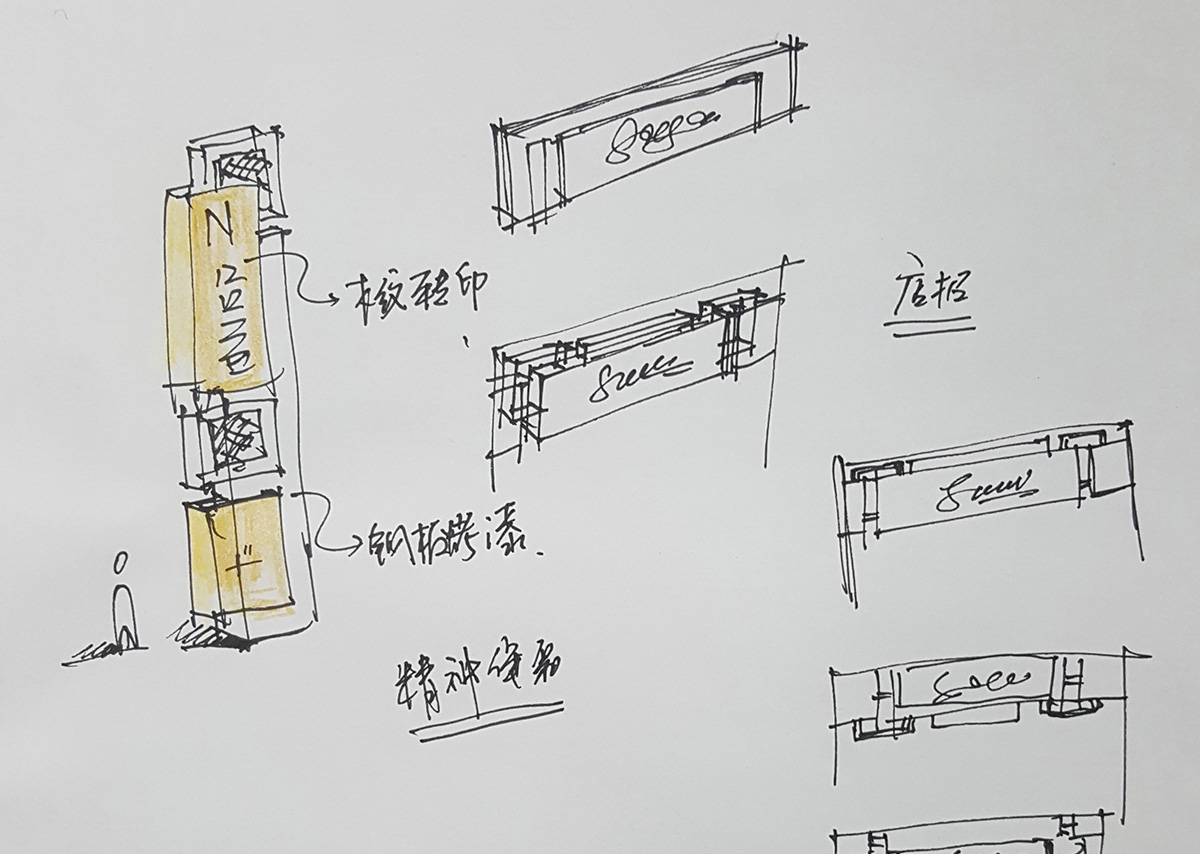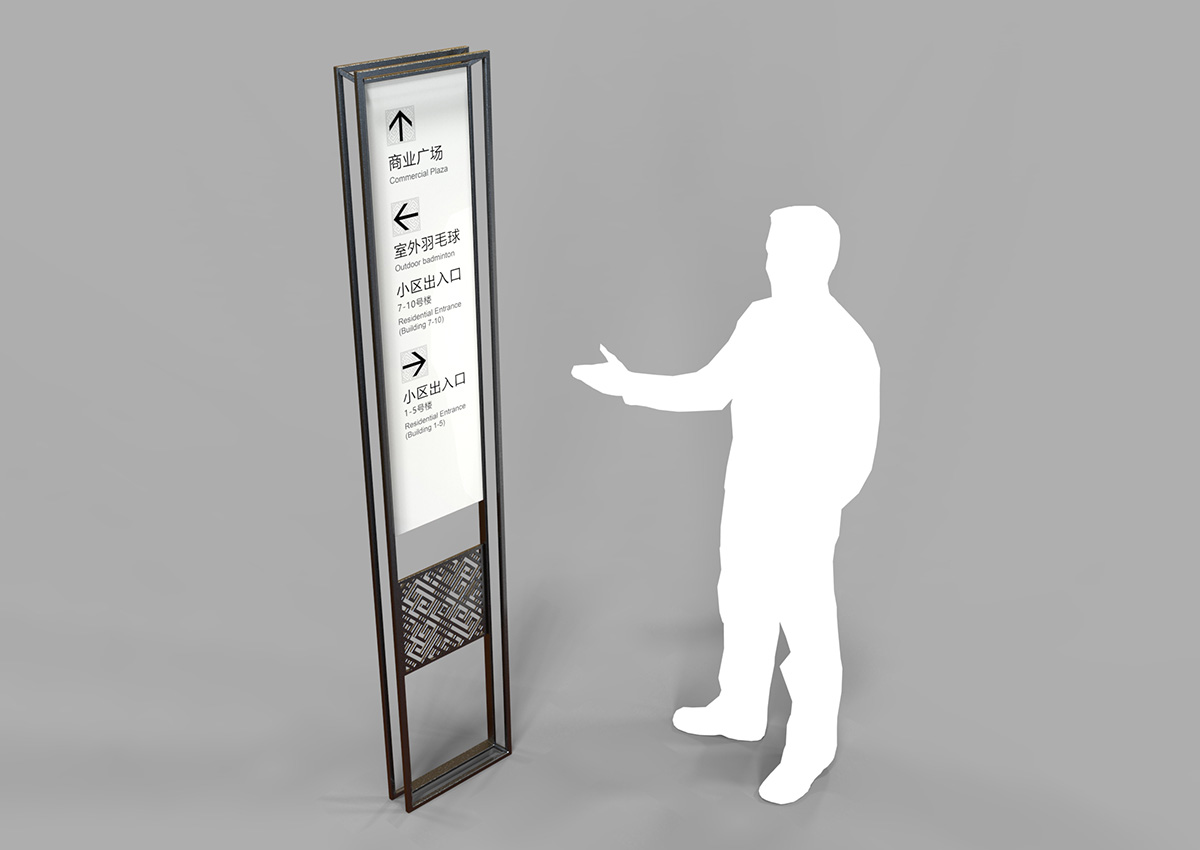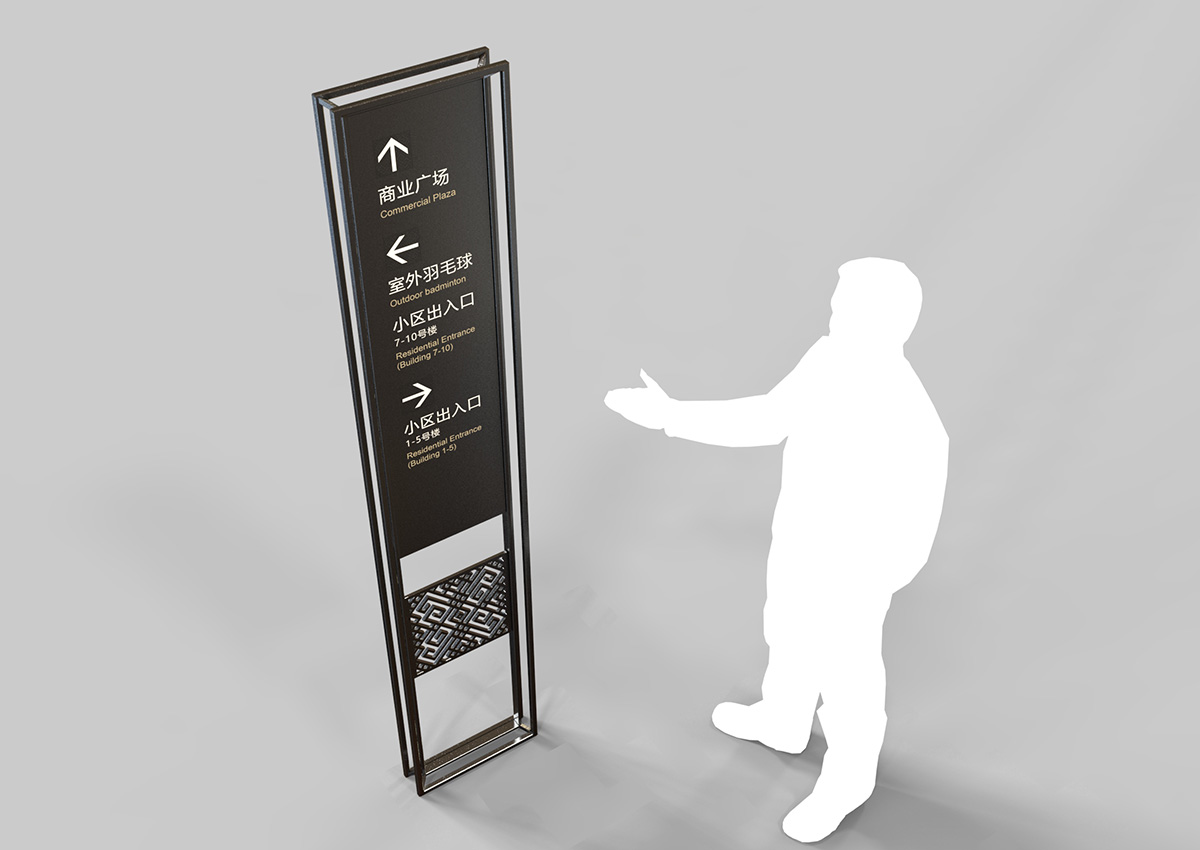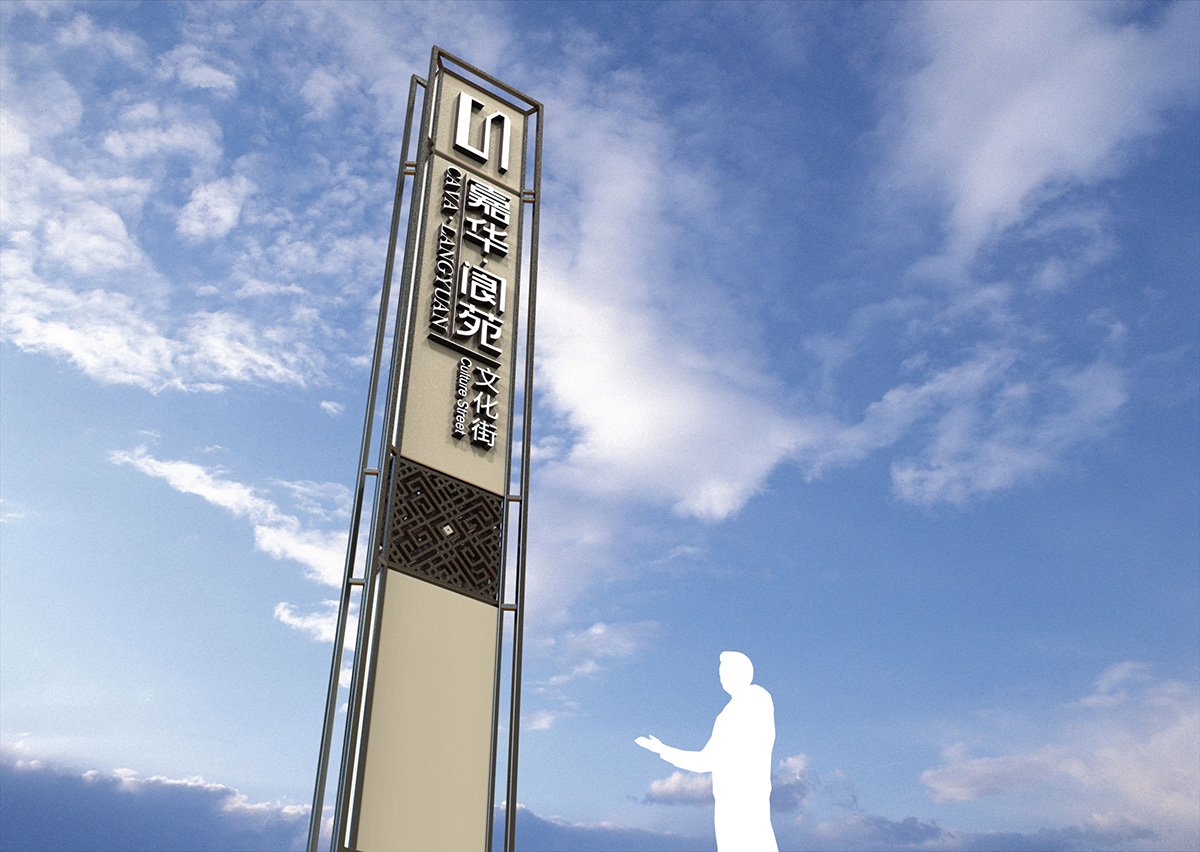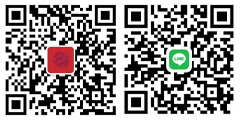
ソース:匠人設計
高級住宅誘導システ...
高級住宅誘導システムの設計共有
欽州嘉華朗園住宅誘導システムの設計では、中庭型生活広場の誘導機能の科学的、効率的、人道的ニーズを確実に満たすと同時に、プロジェクト独自の特徴を強調するために、複数の要素を総合的に検討しました。特徴。 以下は設計分析と提案です。
1. 代表的なシンボルまたはパターンのデザイン:
シンボルやパターンを選択するときは、ブランドイメージとプロジェクトの核となる価値観を深く掘り下げて、デザイン要素がプロジェクトの特徴とスタイルを明確に伝えることができるようにする必要があります。 これにより、ブランドの認知度が高まるだけでなく、顧客が住宅プロジェクトを他の競合他社と区別しやすくなります。 この場合、プロジェクト内の主要な中国デザイン要素を洗練し、デザインに統合しました。
2. プロジェクト環境に統合します。
方向標識のデザインは周囲の環境と調和し、統一感のある雰囲気を作り出す必要があります。 プロジェクトのアーキテクチャと景観からデザイン要素を組み込んで、ウェイファインディング システムの全体的な一貫性と認識性を高めることを検討してください。 この統合により、顧客はよりパーソナライズされた地域的な生活体験を提供できるようになります。
3. 色とグラフィックを区別します。
さまざまな色やグラフィックを使用してさまざまな種類の情報を区別すると、ナビゲーション情報に対するユーザーの理解と認識が向上します。 明るく人目を引く色は主な情報を強調するためによく使用され、柔らかい色は二次的な情報を伝えるのに適しています。 グラフィック デザインは、ユーザーがすぐに理解できるように、過度に複雑なパターンを避け、簡潔かつ明確にする必要があります。
4. フォントサイズの差別化デザイン:
デザインにおいては、情報の重要度に応じてフォントサイズの違いを適切に設定する必要があります。 重要な情報のフォント サイズは比較的大きくする必要がありますが、二次的な情報は、ユーザーがより迅速に閲覧して必要な情報を取得できるように、適切に縮小することができます。 このような設計により、ウェイファインディング システムの効率と実用性が向上するだけでなく、大規模な住宅プロジェクトでも情報が目立ちやすくなります。
5. 簡単な地図と距離の説明を追加します。
地図はウェイファインディング システムにおいて重要な役割を果たすため、デザインはシンプルかつ明確である必要があります。 同時に、地図上に距離の指示をマークすることで、ユーザーは目的地の位置と距離をより正確に把握できるようになり、案内の精度と信頼性が向上します。 このシンプルで実用的なデザインは、ユーザーに優れたナビゲーション体験を提供します。
6. ガイド情報とベース プレートの色のコントラスト:
ガイド情報を見やすくするためには、ガイド情報とベースプレートの色のコントラストに注意する必要があります。 適切なコントラストにより、情報がより目立ち、同系色による情報の無視を避けることができます。 したがって、メッセージが明確に伝わるように、デザインでは色の組み合わせを慎重に検討する必要があります。
7. 一貫した情報設定とポイント計画:
ガイダンスシステムの情報設定とポイント計画は、ユーザーが使用中に段階的に必要な情報を簡単に理解して取得できるように、一貫性があり論理的である必要があります。 合理的なレイアウトとデザインにより、ユーザー エクスペリエンスが向上し、ガイダンス システムの使いやすさと実用性が向上します。
8. 情報グラフィック:
簡潔で明確な国際標準アイコンの使用により、さまざまな言語や文化的背景を持つ人々がナビゲーション情報をより簡単に理解できるようになります。 アイコンのデザインは、情報が直観的で理解しやすいものとなるよう、過度に複雑なパターンや詳細を避け、簡潔かつ明確にする必要があります。 このグラフィカルなデザインにより、ユーザーはより直観的かつ迅速に情報を取得できるようになります。
High-End Residential Guidance System Design Sharing
In the design of the guidance system for the Jinzhou Jiahuarong Garden residential area, we comprehensively considered multiple elements to ensure that the guiding functions of the courtyard-style living square meet the scientific, efficient, and humane needs while emphasizing the unique features of the project. The following is the design analysis and proposal:
- Design of Representative Symbols or Patterns: When choosing symbols or patterns, it is necessary to deeply delve into the brand image and the core values of the project, ensuring that the design elements can clearly convey the characteristics and style of the project. This not only enhances brand recognition but also makes it easier for customers to distinguish the residential project from other competitors. In this case, the main Chinese design elements within the project were refined and integrated into the design.
- Integration with Project Environment: The design of directional signs must harmonize with the surrounding environment, creating a unified atmosphere. Consider incorporating design elements from the project’s architecture and landscape to enhance the overall consistency and recognizability of the wayfinding system. This integration allows customers to experience a more personalized and regional lifestyle.
- Distinguish Colors and Graphics: Using different colors and graphics to distinguish various types of information improves users’ understanding and recognition of navigation information. Bright and eye-catching colors are often used to highlight primary information, while softer colors are suitable for conveying secondary information. Graphic design should avoid overly complex patterns, making it concise and clear for users to quickly comprehend.
- Differentiation in Font Sizes: In the design, it is necessary to appropriately set differences in font sizes according to the importance of the information. The font size for important information should be relatively large, while secondary information can be appropriately reduced, allowing users to browse quickly and obtain the needed information. This design not only improves the efficiency and practicality of the wayfinding system but also makes the information more prominent in large residential projects.
- Add Simple Maps and Distance Descriptions: Maps play a crucial role in the wayfinding system, and the design should be simple and clear. At the same time, marking distance indications on the map helps users accurately understand the location and distance to their destination, improving the precision and reliability of guidance. This simple and practical design provides users with an excellent navigation experience.
- Contrast between Guide Information and Base Plate Colors: To make guide information easily visible, attention must be paid to the color contrast between the guide information and the base plate. Appropriate contrast ensures that information stands out, avoiding the neglect of information due to similar colors. Therefore, the design should carefully consider color combinations to ensure the message is clearly conveyed.
- Consistent Information Setting and Point Planning: The information setting and point planning of the guidance system must be consistent and logical, allowing users to easily understand and obtain the information they need at different stages of use. Reasonable layout and design enhance the user experience and improve the usability and practicality of the guidance system.
- Information Graphics: Using concise and clear international standard icons makes it easier for people from different linguistic and cultural backgrounds to understand navigation information. The design of the icons should avoid overly complex patterns and details, ensuring that the information is intuitive and easy to understand. This graphical design allows users to obtain information more intuitively and quickly.
By translating the above text into English based on the characteristics of the signage and wayfinding system design industry.


